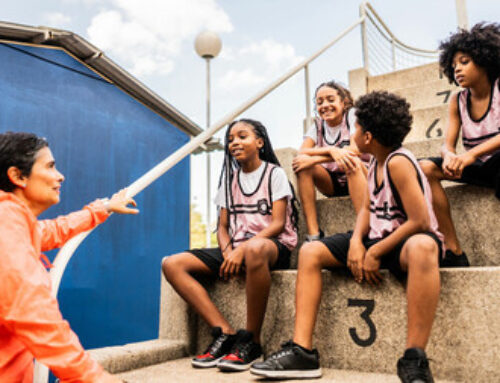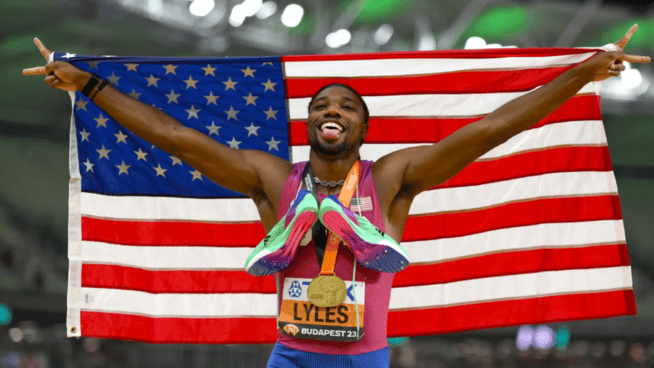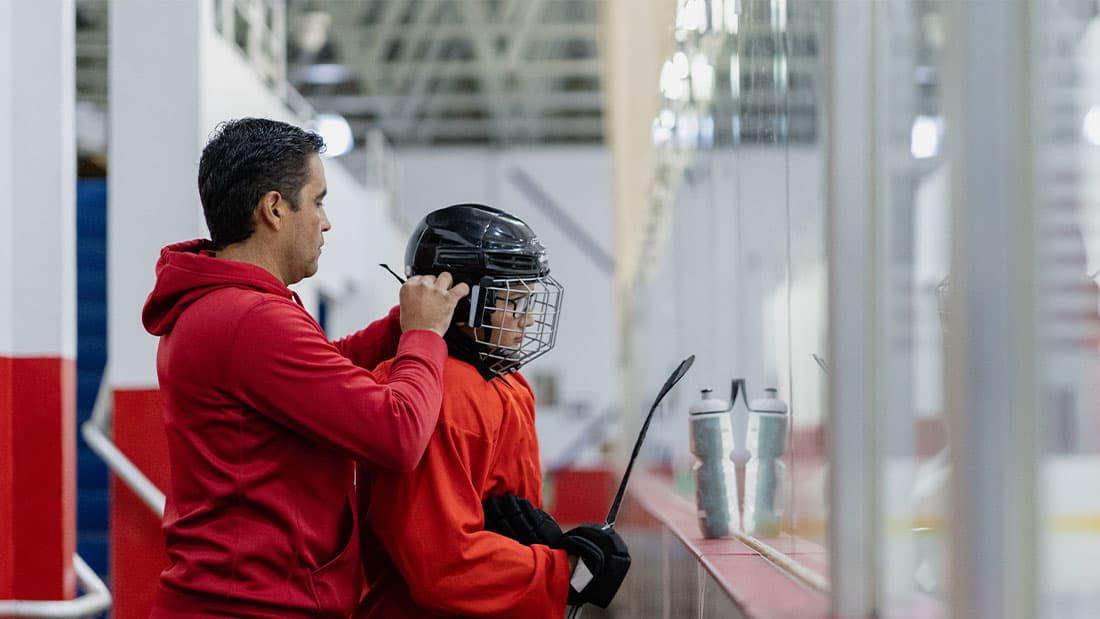Why ‘Going D1’ Isn’t the End All, Be All
Every serious high school athlete with a desire to participate in college sports has some version of the following plan:
- Be a standout performer.
- Get recruited by lots of colleges.
- Get a full-ride scholarship to a D1 school.
- Be a standout performer at the college level.
- Get drafted to become a professional athlete before starting their Hall-of-Fame careers.
This was pretty much my plan as a young baseball player, and it seems like most serious athletes who want to play as long as possible have a version of the above “plan” in their head.
And for most kids, that whole “go D1” thing is a really important part of it. In fact, many view it as non-negotiable.
That’s a really hard thing to do though.
According to a March 2018 report from the NCAA, there are a little more than seven million students playing high school sports. Only about 492,000 make the jump from high school to college on a varsity level, which is approximately 7%. Just 2% of that small group ends up becoming a pro athlete.
This is not to discourage anyone from working hard for their goals and dreams, but it’s helpful to keep things in perspective when it comes to how large the talent pool is.
And what if your high school athletic progression isn’t an ideal scenario?
What if you struggled as a junior but you’re much better than your stats say? Or an injury stole precious time to attract the attention of college coaches?
College sports is a results-based endeavor, so coaches need to see the proof before taking a leap of faith in the recruitment game.
There seems to be an unwritten rule that if you’re an athlete and want to play at the highest level in college, you have to be at that institution for all four years of your eligibility.
That’s simply not true. Many former and present-day professional athletes have debunked that myth. Here are a handful of examples to show there’s more than one path to Division I athletics or the pros:
- Aaron Rodgers: Before playing quarterback for the Cal Bears, his collegiate career started at Butte Community College in California.
- Keyshawn Johnson: Prior to catching passes at USC, the former NFL receiver first attended and played for West Los Angeles College.
- Jae Crowder: Howard College, a community college in Big Spring, Texas, was where Crowder played before taking his talents to Marquette.
- Jimmy Butler: Although Butler finished his college basketball career at Marquette, he began at Tyler Junior College in Texas.
- Albert Pujols: He’ll go down as one of the best right-handed hitters to ever play Major League Baseball. The St. Louis Cardinals drafted him in the 13th round of the 1999 MLB Draft out of Maple Woods Community College, located in Kansas City, Missouri.
- Jorge Posada: The former New York Yankees catcher and four-time World Series champion actually got drafted by the Bronx Bombers twice. He played baseball for Calhoun Community College in Decatur, Alabama on both occasions.
Would it be ideal to land in the college athletic program of your dreams as a freshman with a scholarship and be with the same program for four years? Well, yes, of course it would. But things don’t always go according to plan, and that’s OK.
During the 2018 MLB Draft, there were 11 different Division III players drafted by big-league teams.
Rob Friedman, the man behind Pitching Ninja and the Flatground accounts on Twitter, has also used the power of social media to give attention to little-known prospects and recruits who otherwise wouldn’t have been discovered. With modern technology, if you are good enough, you will be discovered.
It’s good to have goals to strive toward—that’s one of the foundational aspects of being an athlete. And it’s OK for those goals to be big.
However, if you don’t end up receiving an offer from a D1 school, that most definitely does not mean your athletic dreams have been vanquished. Just look at all the superstars who walked on to their college teams.
So much attention and obsession gets wrapped up in “going D1,” but the reality is that no two athletic journeys are exactly the same. If you don’t get a D1 scholarship right out of high school, you still have so many options that can get you where you want to be.
Two things you can always control are you attitude and your effort.
If you view not receiving a D1 scholarship as the end of your athletic journey, then it is.
But if you stay motivated and are willing to hurdle a couple extra obstacles, there’s really no telling just how far you’ll go.
Photo Credit: drxy/iStock
READ MORE:
RECOMMENDED FOR YOU
MOST POPULAR
Why ‘Going D1’ Isn’t the End All, Be All
Every serious high school athlete with a desire to participate in college sports has some version of the following plan:
- Be a standout performer.
- Get recruited by lots of colleges.
- Get a full-ride scholarship to a D1 school.
- Be a standout performer at the college level.
- Get drafted to become a professional athlete before starting their Hall-of-Fame careers.
This was pretty much my plan as a young baseball player, and it seems like most serious athletes who want to play as long as possible have a version of the above “plan” in their head.
And for most kids, that whole “go D1” thing is a really important part of it. In fact, many view it as non-negotiable.
That’s a really hard thing to do though.
According to a March 2018 report from the NCAA, there are a little more than seven million students playing high school sports. Only about 492,000 make the jump from high school to college on a varsity level, which is approximately 7%. Just 2% of that small group ends up becoming a pro athlete.
This is not to discourage anyone from working hard for their goals and dreams, but it’s helpful to keep things in perspective when it comes to how large the talent pool is.
And what if your high school athletic progression isn’t an ideal scenario?
What if you struggled as a junior but you’re much better than your stats say? Or an injury stole precious time to attract the attention of college coaches?
College sports is a results-based endeavor, so coaches need to see the proof before taking a leap of faith in the recruitment game.
There seems to be an unwritten rule that if you’re an athlete and want to play at the highest level in college, you have to be at that institution for all four years of your eligibility.
That’s simply not true. Many former and present-day professional athletes have debunked that myth. Here are a handful of examples to show there’s more than one path to Division I athletics or the pros:
- Aaron Rodgers: Before playing quarterback for the Cal Bears, his collegiate career started at Butte Community College in California.
- Keyshawn Johnson: Prior to catching passes at USC, the former NFL receiver first attended and played for West Los Angeles College.
- Jae Crowder: Howard College, a community college in Big Spring, Texas, was where Crowder played before taking his talents to Marquette.
- Jimmy Butler: Although Butler finished his college basketball career at Marquette, he began at Tyler Junior College in Texas.
- Albert Pujols: He’ll go down as one of the best right-handed hitters to ever play Major League Baseball. The St. Louis Cardinals drafted him in the 13th round of the 1999 MLB Draft out of Maple Woods Community College, located in Kansas City, Missouri.
- Jorge Posada: The former New York Yankees catcher and four-time World Series champion actually got drafted by the Bronx Bombers twice. He played baseball for Calhoun Community College in Decatur, Alabama on both occasions.
Would it be ideal to land in the college athletic program of your dreams as a freshman with a scholarship and be with the same program for four years? Well, yes, of course it would. But things don’t always go according to plan, and that’s OK.
During the 2018 MLB Draft, there were 11 different Division III players drafted by big-league teams.
Rob Friedman, the man behind Pitching Ninja and the Flatground accounts on Twitter, has also used the power of social media to give attention to little-known prospects and recruits who otherwise wouldn’t have been discovered. With modern technology, if you are good enough, you will be discovered.
It’s good to have goals to strive toward—that’s one of the foundational aspects of being an athlete. And it’s OK for those goals to be big.
However, if you don’t end up receiving an offer from a D1 school, that most definitely does not mean your athletic dreams have been vanquished. Just look at all the superstars who walked on to their college teams.
So much attention and obsession gets wrapped up in “going D1,” but the reality is that no two athletic journeys are exactly the same. If you don’t get a D1 scholarship right out of high school, you still have so many options that can get you where you want to be.
Two things you can always control are you attitude and your effort.
If you view not receiving a D1 scholarship as the end of your athletic journey, then it is.
But if you stay motivated and are willing to hurdle a couple extra obstacles, there’s really no telling just how far you’ll go.
Photo Credit: drxy/iStock
READ MORE:
RECOMMENDED FOR YOU
Create A Free Recruiting Profile Today!
CaptainU helps athletes & parents not only be proactive but also to manage and take control of their entire recruiting journey.











